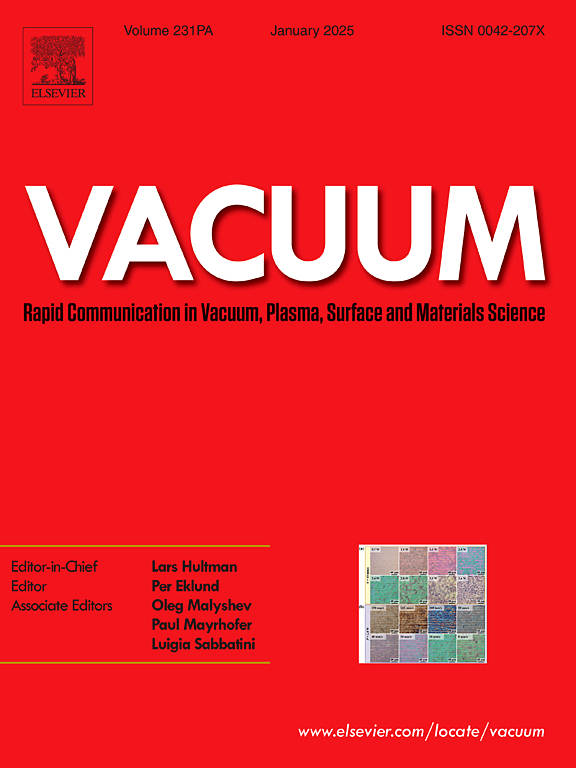用于增强光催化活性的磁性 CoFe1.95Y0.05O4/Ag/g-C3N4 Z 型异质结的构建与降解机理
IF 3.8
2区 材料科学
Q2 MATERIALS SCIENCE, MULTIDISCIPLINARY
引用次数: 0
摘要
本研究通过水热合成法制备了一种 Z 型异质结 CoFe1.95Y0.05O4/Ag/g-C3N4 (CFYO/ACN) 磁性纳米复合材料。使用不同的表征工具对该复合材料进行了表征和分析,并研究了其对亚甲基蓝(MB)的光催化降解活性。结果表明,与 CoFe1.95Y0.05O4(CFYO)和 Ag/g-C3N4(ACN)相比,CFYO/ACN 复合材料对甲基溴的降解效率最高,120 分钟内降解率可达 97%,分别是 ACN 和 CFYO 的 1.26 倍和 1.09 倍。CFYO/ACN 催化性能的提高归因于异质结的形成有效抑制了光生载流子的复合。此外,连续五次的循环降解实验表明,CFYO/ACN 在光降解过程中表现出高效的光催化降解性能、稳定的晶体结构和易于回收利用的特点。最后,捕获实验证实,超氧自由基(⋅O2-)和羟自由基(-OH)在降解过程中发挥了重要作用。这项研究为构建高效光催化剂提供了一种有效的策略。本文章由计算机程序翻译,如有差异,请以英文原文为准。
Construction and degradation mechanism of the magnetic CoFe1.95Y0.05O4/Ag/g-C3N4 Z-scheme heterojunction for enhanced photocatalytic activity
In this study, a Z-scheme heterojunction CoFe1.95Y0.05O4/Ag/g-C3N4 (CFYO/ACN) magnetic nanocomposite was prepared by hydrothermal synthesis. The composite was characterised and analyzed using different characterization tools and its photocatalytic degradation activity towards methylene blue (MB) was investigated. The results showed that the CFYO/ACN photocatalyst compared to CoFe1.95Y0.05O4 (CFYO) and Ag/g-C3N4 (ACN), the composite CFYO/ACN had the highest degradation efficiency of MB, which was up to 97 % within 120 min, which was 1.26 and 1.09 times higher than that of ACN and CFYO, respectively. The enhancement of the catalytic performance of CFYO/ACN was attributed to the fact that the heterogeneous junction formation effectively inhibited the complexation of photogenerated carriers. In addition, five consecutive cyclic degradation experiments showed that CFYO/ACN exhibited efficient photocatalytic degradation, stable crystal structure, and easy recycling in the photodegradation process. Finally, the capture experiments confirmed that superoxide radicals () and hydroxyl radicals (·OH) play a major role in the degradation process. This study provides an effective strategy for the construction of efficient photocatalysts.
求助全文
通过发布文献求助,成功后即可免费获取论文全文。
去求助
来源期刊

Vacuum
工程技术-材料科学:综合
CiteScore
6.80
自引率
17.50%
发文量
0
审稿时长
34 days
期刊介绍:
Vacuum is an international rapid publications journal with a focus on short communication. All papers are peer-reviewed, with the review process for short communication geared towards very fast turnaround times. The journal also published full research papers, thematic issues and selected papers from leading conferences.
A report in Vacuum should represent a major advance in an area that involves a controlled environment at pressures of one atmosphere or below.
The scope of the journal includes:
1. Vacuum; original developments in vacuum pumping and instrumentation, vacuum measurement, vacuum gas dynamics, gas-surface interactions, surface treatment for UHV applications and low outgassing, vacuum melting, sintering, and vacuum metrology. Technology and solutions for large-scale facilities (e.g., particle accelerators and fusion devices). New instrumentation ( e.g., detectors and electron microscopes).
2. Plasma science; advances in PVD, CVD, plasma-assisted CVD, ion sources, deposition processes and analysis.
3. Surface science; surface engineering, surface chemistry, surface analysis, crystal growth, ion-surface interactions and etching, nanometer-scale processing, surface modification.
4. Materials science; novel functional or structural materials. Metals, ceramics, and polymers. Experiments, simulations, and modelling for understanding structure-property relationships. Thin films and coatings. Nanostructures and ion implantation.
 求助内容:
求助内容: 应助结果提醒方式:
应助结果提醒方式:


